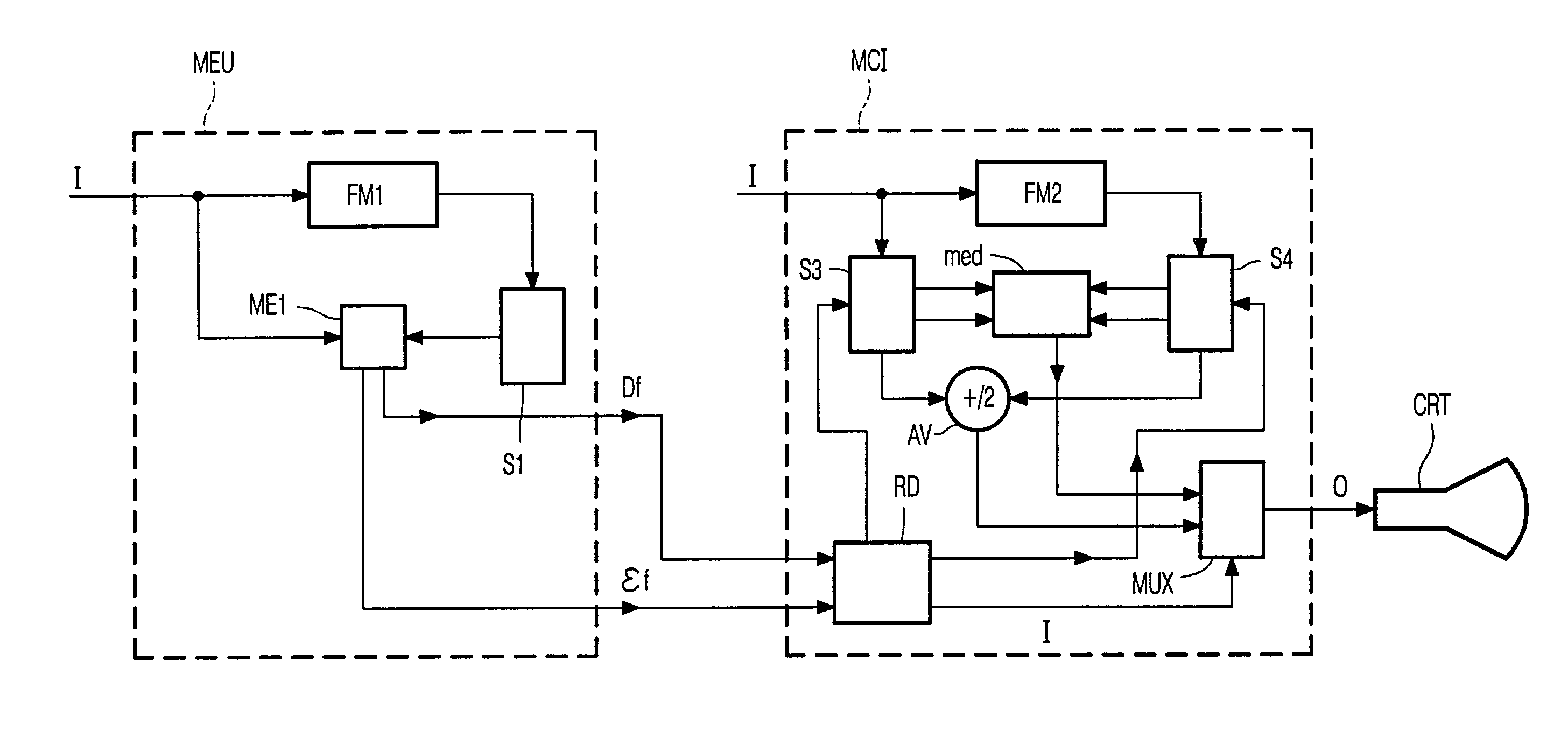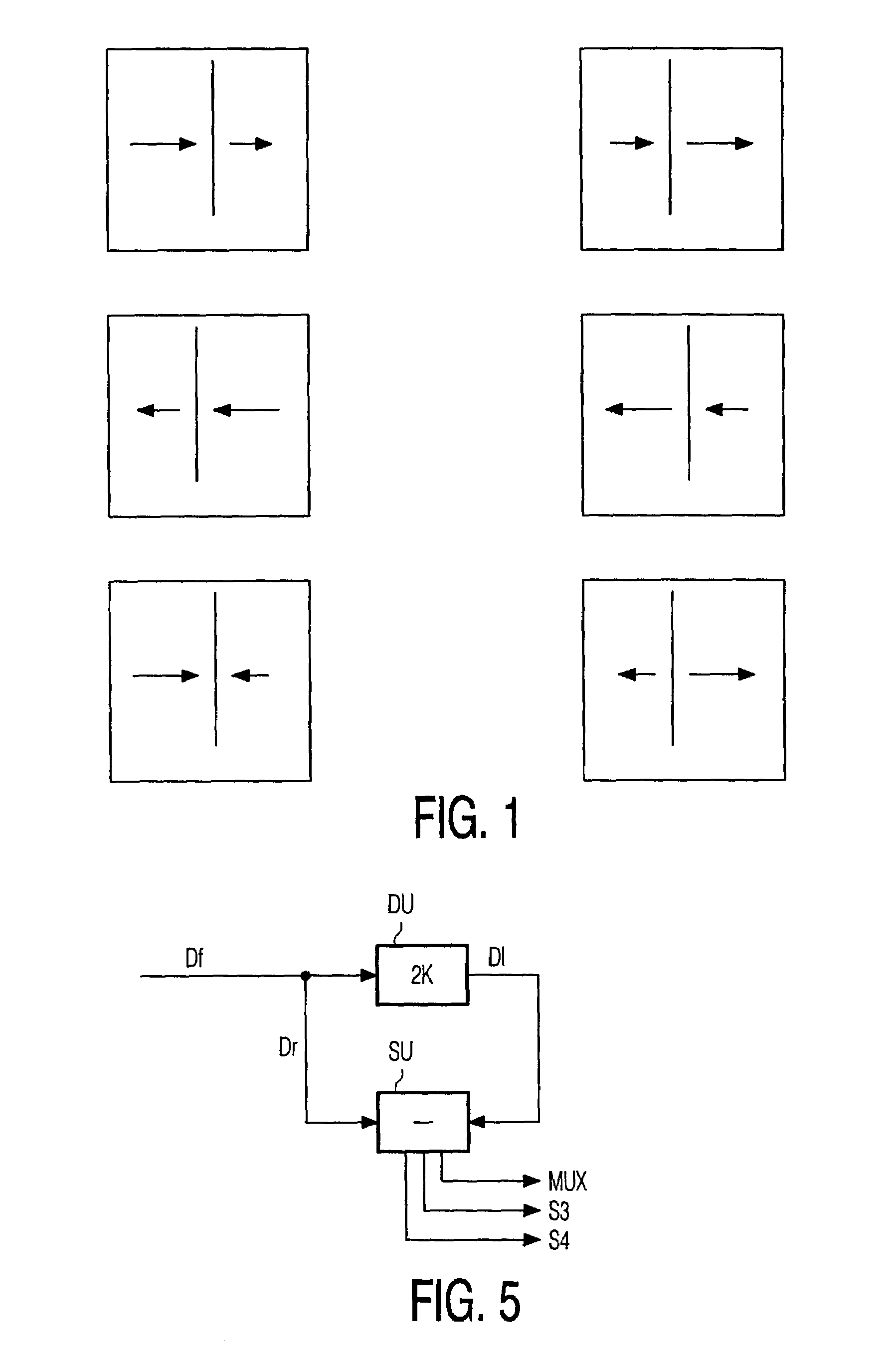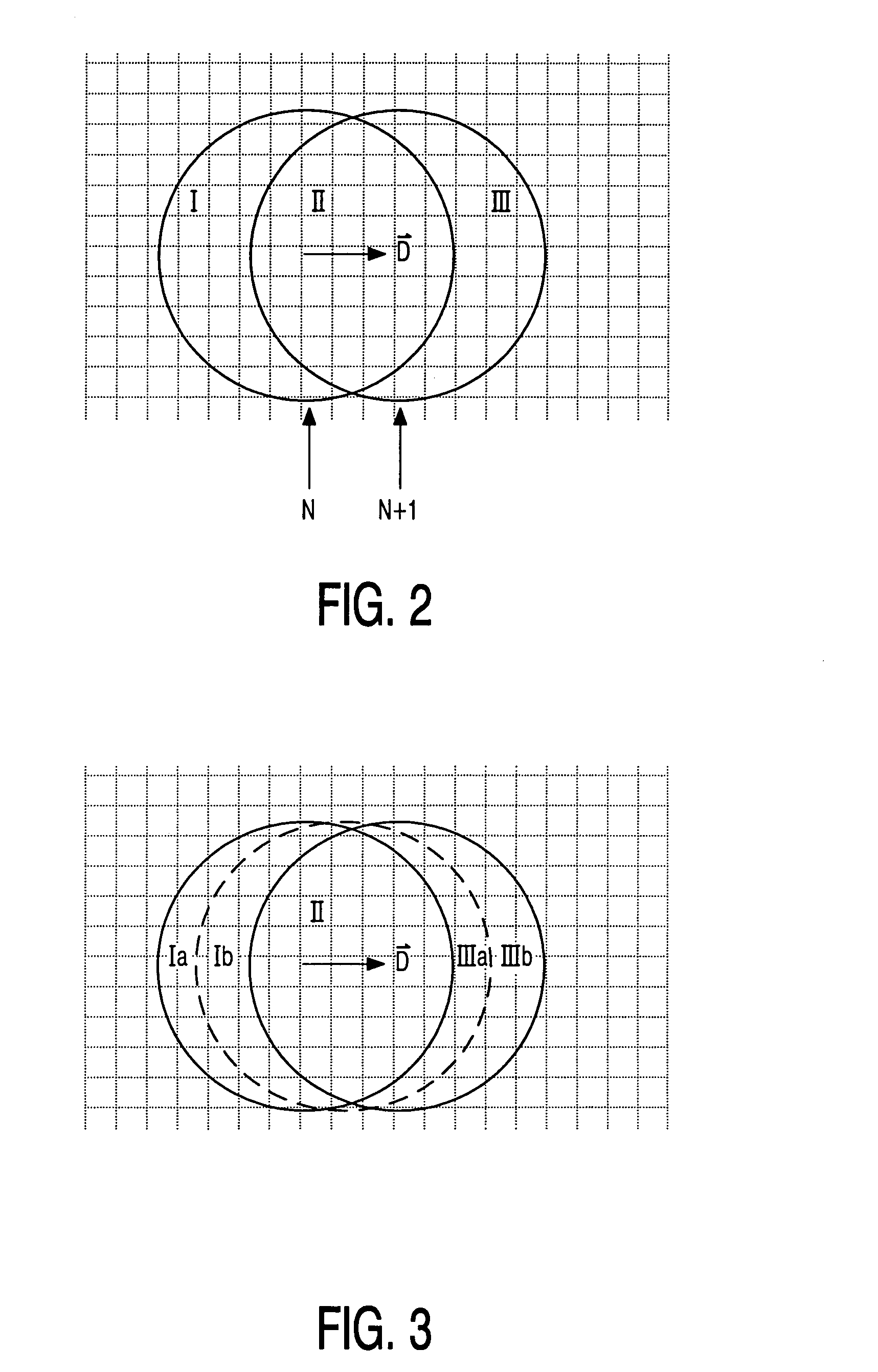Problem area location in an image signal
- Summary
- Abstract
- Description
- Claims
- Application Information
AI Technical Summary
Benefits of technology
Problems solved by technology
Method used
Image
Examples
Embodiment Construction
[0021]Our method aims first at localizing, in a robust and cost-effective way, the areas where vector-based algorithms for scan rate conversion can produce very strong and annoying artifacts. For those areas, several solutions are proposed, depending on the target quality of the up-conversion and on the cost constraints. The usefulness of this approach shall be proven in a comparison with the aforementioned alternatives, although their benchmarking has not yet been completed.
[0022]In order to detect areas in which covering or uncovering occur, the current algorithm just needs the information that is available in a motion vector field related to that frame, and a very limited processing of that information. In fact, the motion vector field already describes the temporal behavior of the sequence, generally obtained using more than one frame, thus no additional information is needed for only covering / uncovering detection.
[0023]The current algorithm does not need an ad hoc motion estima...
PUM
 Login to View More
Login to View More Abstract
Description
Claims
Application Information
 Login to View More
Login to View More - Generate Ideas
- Intellectual Property
- Life Sciences
- Materials
- Tech Scout
- Unparalleled Data Quality
- Higher Quality Content
- 60% Fewer Hallucinations
Browse by: Latest US Patents, China's latest patents, Technical Efficacy Thesaurus, Application Domain, Technology Topic, Popular Technical Reports.
© 2025 PatSnap. All rights reserved.Legal|Privacy policy|Modern Slavery Act Transparency Statement|Sitemap|About US| Contact US: help@patsnap.com



